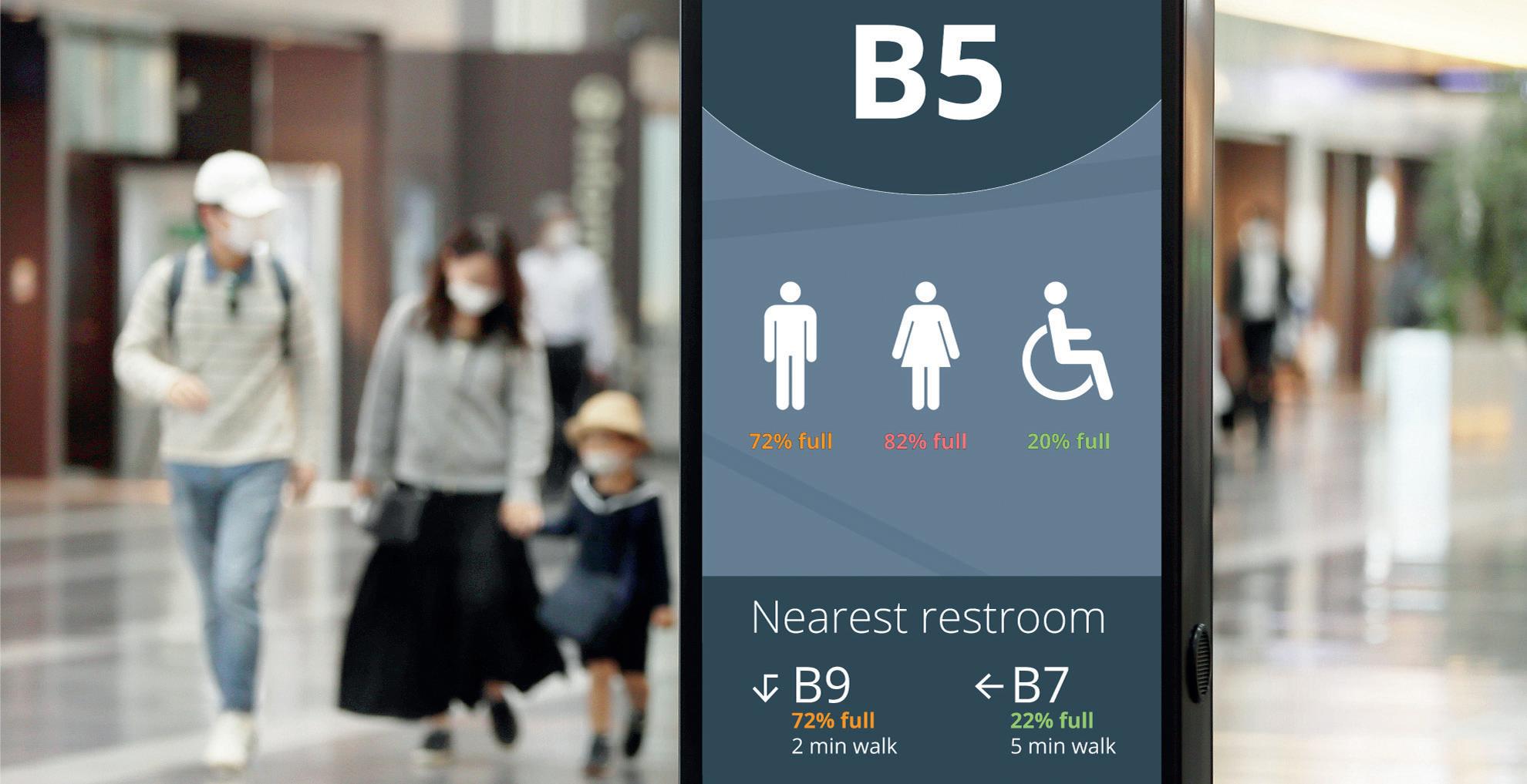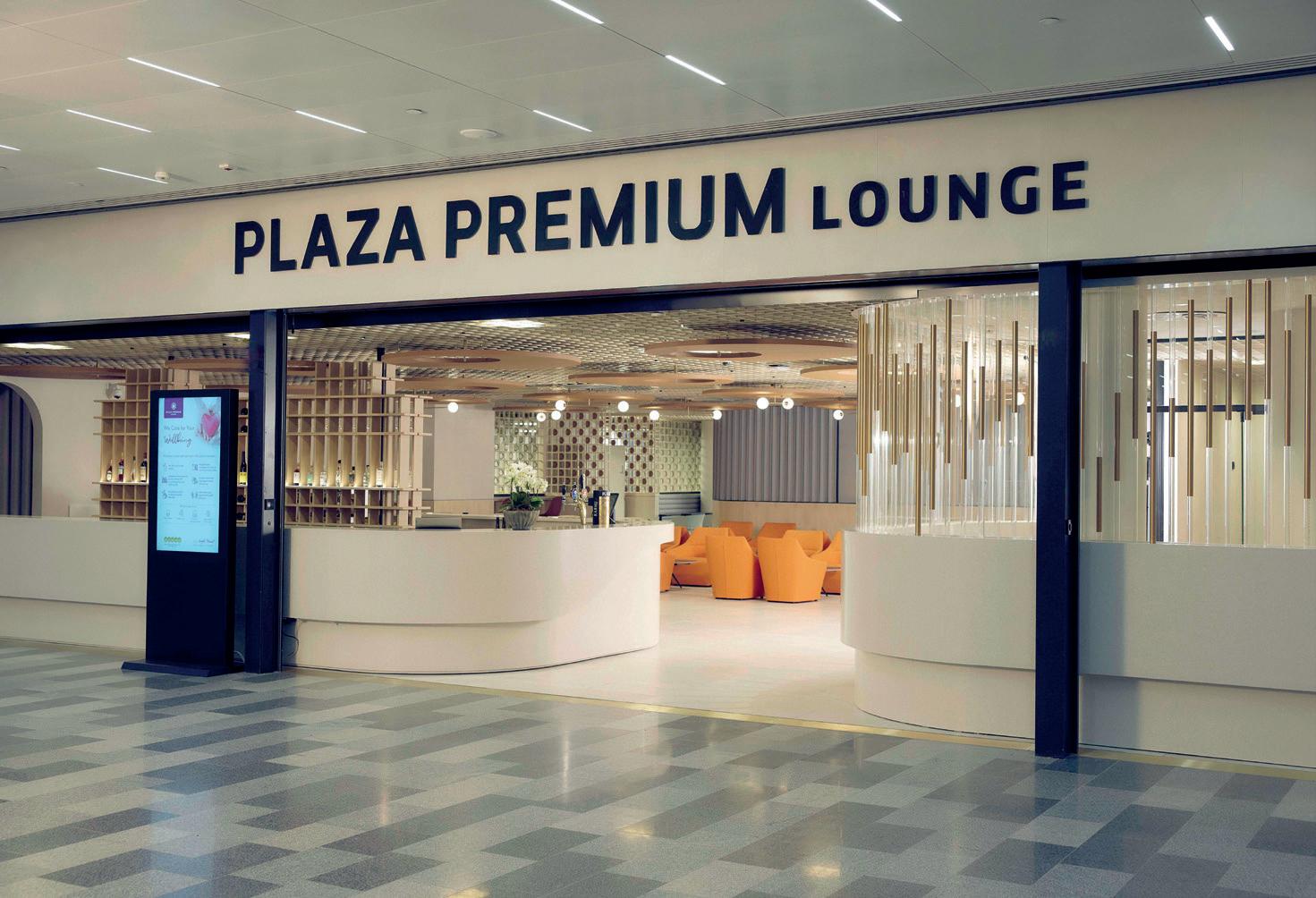
4 minute read
Open for business
The latest news from ACI’s World Business Partners.
Ensuring the better use and cleaning of airport restrooms
Advertisement
While airports have always had to maintain high hygiene standards, the pandemic has forced a renewed focus on how high-touch, high-traffic areas are used, cleaned, and sanitised writes Veovo’s Christian Carstens.
Previously, for example, it was enough to ensure that all facilities were regularly cleaned, on a schedule, to maintain a predetermined standard of hygiene.
Now, the challenge is significantly more complex. Restrooms must be kept clean and free of crowds. An influx of passengers can no longer be left to their own devices to find their way to the nearest facilities.
Airports must, ideally, understand facility usage, react quickly to ensure sanitation and reduce crowding, and have the ability to plan custodial tasks more efficiently.
Many airports are turning to a combination of sensors and machine learning to track and analyse people’s movements within the airport to manage restroom usage.
Occupancy and density analysis enables operators to understand how many people may use a specific restroom at a particular time, based on counting and controlling the situation of each bathroom in real-time.
When presented with live occupancy data, passengers can make informed decisions about which restrooms to use – including information on the walking times to alternative, less crowded facilities.
By combining live occupancy data with passenger flow analytics, operators can also measure and predict crowding events ahead of time. This enables the airport to direct the flow of passengers across restroom facilities before they become too busy, for example, by including messages on digital displays to encourage dwell time in less active zones or dynamic directions via wayfinding apps.
Rather than a static, rota-based cleaning and sanitising schedule, airports would benefit from moving to a needs-based system.
Armed with historical usage insights, custodial service managers can align cleaning plans to forecasted usage and flight schedules while monitoring staff activity for accurate cleaning-time displays.
Deploying custodial resources to the busiest facilities, as needed, makes sense. Therefore, services that can adapt easily to being responsive, even predictive, to shifting flight schedules and people movements will be the most efficient and effective.
For many airports, especially those that already have passenger flow systems in use, it is a simple matter of expanding their datacapture capabilities to include restroom facilities or, in many cases, integrating existing sensor outputs into one common platform.
This extension fits neatly with the already-proven benefits of airport flow management, including real-time responsiveness to handle challenges on the go, predictive analysis that improves efficiency, and cost savings by ensuring resourcing matches demand.
For example, airports can understand the impact of gate changes on restroom crowding. They can predict how security bottlenecks affect lounge dwell time and facility usage and determine the optimal custodial response.
Understanding how events affect passengers’ show-up profiles, movement, dwell habits, and facility usage throughout the airport makes it possible to automate the appropriate responses.
By connecting airport-wide passenger flow analytics, occupancy, and density analysis with operations, airports will have the appropriate tools for more intelligent, predictive decision-making, from passenger arrival to departure and at every point in between.
Armed with precise data, airports can act confidently to ensure passengers have easy access to clean, uncrowded restrooms – lifting the overall airport experience and passenger confidence.
New processing technology for Nepalese gateway

The Civil Aviation Authority of Nepal has selected Collins Aerospace to provide passenger processing and baggage systems at Nepal’s Tribhuvan (KTM), Gautam Buddha (BWA) and Pokhara (PKR) international airports.
According to Collins, its solutions will help the airports ease congestion; enable airlines to accelerate passenger processing; sort, route and handle baggage with higher accuracy; and allow passengers to self check-in, tag and dispatch their own luggage.
KTM is located at Kathmandu, the capital city of Nepal, Bagmati Province. BWA is one of the oldest airports in Nepal after KTM, serving tourists who visit Lumbini for its Buddhist Heritage Tour, and PKR is the aerial gateway to the Himalayan and Annapurna regions in Nepal.

Plaza Premium expands Helsinki offering
Plaza Premium Group (PPG) has opened a second lounge at Helsinki Airport. Located close to gate 40 in the non-Schengen area of the new Terminal 2, the 731sqm facility boasts its own Finnish sauna as well as a full ‘Wellness Centre’ including hair salon, beauty treatments and massage facilities.
“We are excited to open our second Plaza Premium Lounge in Helsinki, and continue to grow our footprint in Finland and Europe,” says PPG’s regional general manager, for Europe, Middle East and Africa, Okan Kufeci. Pacific Gateway

